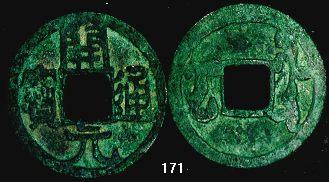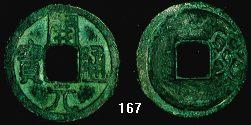Türgesh - Sogd, Chach, Fergana
Ca. 600 - 1000 AD
Turgesh/Arslanid's coins - http://www.charm.ru/coins/misc/turgeshcashwithrunas.shtml
COINS OF CENTRAL ASIA - http://www.sogdcoins.narod.ru/english/semirechie/coins.html
Turgis Coin - http://www.henan-china.com/ChinaInfo/xinjiangyishu/Brone/136e.htm
- http://www.coinet.net/sk20.htm
Larissa Baratowa, Tashkent: Old Turkic Coins of Central Asia
http://www.onsnumis.org/news/jena99.shtml
Un-Iconographic Types The Old Turkic coins follow the principal design of the Chinese cash: a square hole in the center with inscriptions at its sides. The definition ‘Old Turkic’ derives from the names and titles which appear in the legends. These coins can be divided into classes, groups and types. The following picture emerges if we take into consideration the topography and stratigraphy of finds:
I. - Coins of the „Turgesh circle": groups A, B, C - Semirechye (= Jety-Su), from the end of the 7th century AD.
II. - Turgesh coins: group A - consisting of seven types - Semirechye (= Jety-Su) - after 730s.
III. - Coins with Turkic names and titles: group A, B, C, D - some cities of Sogd, Chach, Fergana and Jety-Su - from the end of the 7th to the middle of the 8th century.
IV. - Coins of anonymous Kagans: groups A, B, C, D - Sogd, Chach, Fergana - around the middle of the 8th century.
V - „Proto-Karakhanid" coins: group A - Jety-Su - 9th - 10th century.
The script and language of the inscriptions are Sogdian, with the exception of the „Proto-Karakhanid" coins, which carry Kufic legends. The appearance of coins with inscriptions on both sides (one mentions the Türgesh Kagan and the other referring to the local Sogdian ruler) within ‘Class I’ reflects the political dependence of the Sogdian principalities on the Turgesh Kagans. This led Mrs. Baratova to suggest that the Turgesh coins, which are known from finds throughout Central Asia, were produced under the influence of those cities.
Some Turgesh coin-types were obviously issued by representatives of the Karluk Dynasty, which came to power in Jety-Su after 766 AD.
The coins of ‘Class III’ were cast by Old Turkic rulers in Sogd and Chach. Mrs. Baratova reported on the Turkish rulers according to the Chinese chronicles.
An important question remains: who was responsible for the issue of the anonymous coins of ‘Class IV’ with the title ‘Kagan’?
The answer to this question can be found if one takes into consideration the distribution of finds as well as the traditions of the Türkic statehood and the general background provided by Central Asian history. It can be assumed that the coins of ‘Class IV’ were issued by Turkic sovereigns, which ruled for a short time over certain areas of Sogd and Chach. The title g’g’n (Kagan) was used as a counterpart to the Sogdian title xw’b (Yagbu = ‘Western Viceroy’ of the supreme Kagan), which was common on the coins of Central Asia from the 6th to the 8th century. The relatively low number of Turkic coins found in Sogd, Chach and Fergana is due to the chronological limits of this coinage - it was terminated by the Arab conquest of Mawarannahr and the consequent introduction of new kinds of coins. In Jety-Su, however, the issue of Old Turkic coins continues into the 9th to 10th century, developing into the transitional ‘Proto-Karakhanid’ coinage with Chinese fabric and Kufic inscriptions.
Extract from the work of S. Yatsenko shows dynastic or state or Chach tamga of the Sarmatian monuments approx. 150 - 250 AD and Chach coins of the pre-Turgesh time (dating of the coins is not shown). For understanding of the Kangar - Sarmat relationship, the provenance of the tamgas on the Sarmatian monuments needs to be accounted for.
W. Ukraine Sarmats - Kangars
| N.Pontic Sarmats ca 150 - 250 AD | Chach |
| Fig. 6/55 | Fig. 29/32 |
|
|
|
Respective Chach Coins
http://www.kroraina.com/ca/c_chach.html
 |
 |
 |
Sorry for the incomplete text, I do not intend to have Japanese fonts on the site
http://www1.u-netsurf.ne.jp/~sirakawa/C014.htm => Wayback Machine
| Baga Turgish Qaghan pny | |
| ~~~ twrkys kagan pny | Godlike Türgesh kagan's coin' |
| ~~~ twrkys kagan pny | Fen of king Turgesh's kagan |
| ~~~ | Heavenly Turgis Khanate Coin |
| ~~~ | (Sulu Qaghan) |
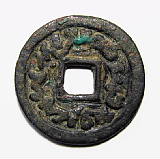 |
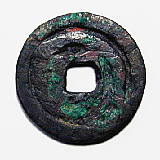 |
24.8mm 4.7g |


Per: Jim Farr
The coins below are copied from http://www.grifterrec.com/coins/centralasia/centralasia2.html
|
Circa 500 - 600 AD(?) King of Chach/Asbar(?), AE Drachm(?) Central tamga ; Sogdian(?) legend around. |
A dish inscribed with the name of Atilla's son
Diggizikh and tamga in its inscription |
||
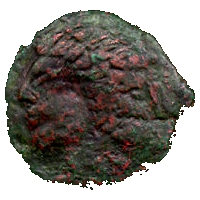 |
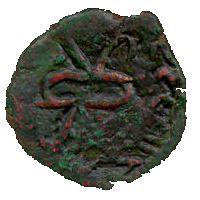 |
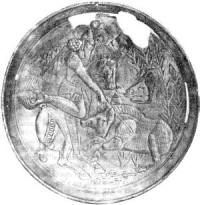 |
|
|
Circa 650 - 750 AD(?) |
Tamga | ||
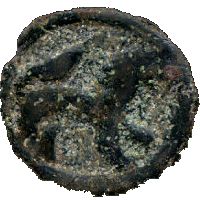 |
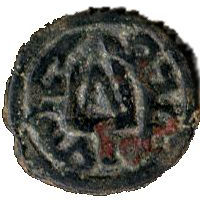 |
 |
|
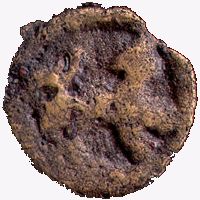 |
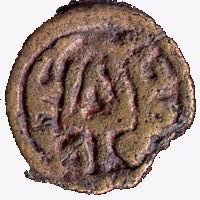 |
 |
|
Circa 650 - 750 AD(?)
King of Chach, AE Drachm (?)
Central
tamga, Sogdian(?) legend around
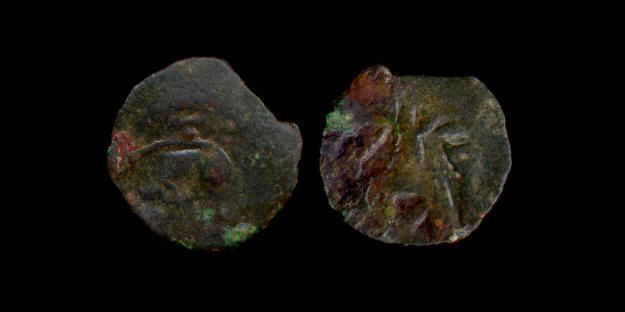
|
Circa 650 - 750 AD(?) King of Chach/Domain of Farnkat, AE Drachm(?) Central tamga or schematized fire altar; Sogdian(?) legend around |
Tamga | |
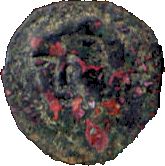 |
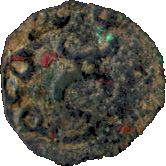 |
|
The first raids by Moslem Arabs into Chach occured in 713-714 AD/AH 94-95 under the leadership of Qutaiba bin Muslim (Mayer, 1998). The earliest Islamic coins currently published from al-Shash are a silver dirham (perhaps unique) from Madinat al-Shash in 803, dirhams from Ma'dan al-Shash in 808, and a dirham from Chach (al-Shash) in 814 (Mayer, 1998). It is unknown whether al-Shash, Madinat al-Shash and Ma'dan al-Shash are the same mint, but it seems reasonable that they are not. Zambaur (1968) listed dirhams struck in al-Shash in 782 and 785, but he himself doubted the existence of the example from 785, and Mayer (1998) reported that the 782 example is also spurious. Mayer concluded that the earliest Islamic coin struck in Chach was dated AH 803.
T.D. Yih and J. de Kreek lectured at the Dutch 1994-ONS meeting
The coins below are copied from http://www.charm.ru/coins/misc/Soghdian-kaiyuan.shtml
 |
 |
 |
 |
 |
|
 |
 |
|
 |
 |
|
 |
 |
 |
 |
 |
|
 |
 |
|
 |
